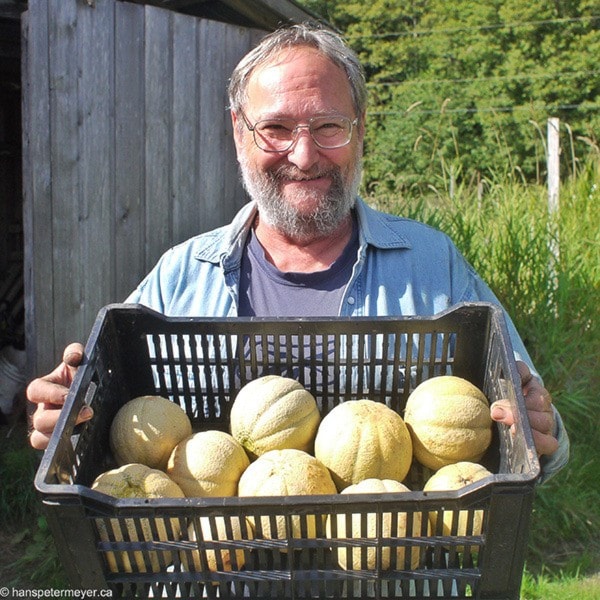Hans Peter Meyer
Special to the Record
RockBottom Farm is a small Merville acreage, located in what grower Steve Horel acknowledges is a "frost pocket."
Why did he start growing vegetables in a frost pocket in 1974? “I was hungry. And I was tired of tree-planting." You can find Steve at the outdoor Saturday Comox Valley Farmers' Market from early spring through to October - depending on the frost.
What are you growing?
“In the spring it's lettuce, early turnips.” There’s also a selection of bedding plants: tomatoes, peppers, squash, and even melons. His tomato starts are prized by gardeners. This year we bought a melon plant, and it's ripening in our Courtenay plot.
The smell of ripe melons surrounds us as we talk. "I've been growing melons for the extended family for several years. This year I'll have enough for the market."
As the season shifts, field crops come to the fore, and the greenhouses take on a second life, growing the tomatoes that RockBottom is perhaps best known for.
A walk with Steve through the greenhouses is an education. They are a rough laboratory. He's constantly experimenting, testing: old seed stock, new-to-him varietals, grafting millimetre-thin tomato seedlings to disease resistant root stock. There are regular taste tests with friends and family. He's on a quest: to produce great tasting tomatoes that are resistant to the many blights and diseases that make a farmers' life "interesting."
In the field, there is a broad spectrum of vegetables, including more tomatoes. The next greatest quantity: green beans – and carrots. "Lots of carrots!"
Growing for the Comox Valley Farmers' Market
Steve has experimented with selling to retailers, but RockBottom is at home at the market and he’s been there “since day 1.” The market is “a God-send for any small grower, especially someone starting out. Stores or processors need a consistent supply. You don't have that pressure at the market. You can sell any quantity, even if you've only got half a dozen cabbage, or two dozen cauliflower: you can sell them at the market. It's a nice way to grow food," Steve explains. "It's a nice way to sell."
The market is also a good place to test product. His Spanish peppers are an example. "This variety is used a lot in tapas, and I started growing them them 4-5 years ago. I fell in love with them.” He shrugs, “I figured I'd sell a few at the market. Pretty soon, people were coming back and saying… 'Those peppers - do you have any more of those?' The market let's you develop a niche product for a niche market. It's the perfect place to do that." The same process is now unfolding with melons.
How long will RockBottom have melons for the market? "That's a very good question. Probably several weeks. I've also got my fingers crossed to end the season with some honeydew melons." It all depends on the frost.
www.hanspetermeyer.ca, @hanspetermeyer on Twitter
